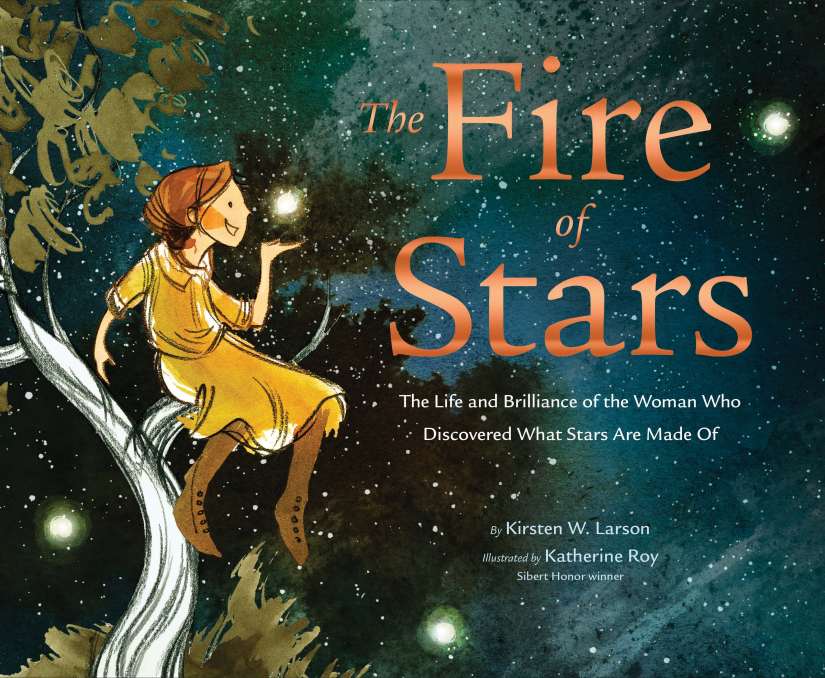Each month, I spotlight a book-based educational activity teachers and homeschooling parents can use with their students. This activity is adapted from the educators’ guide for THE FIRE OF STARS, created by Marcie Colleen. You’ll find the complete guide here.
Examining book jackets: An ELA reading comprehension activity
Whenever I do a storytime with kids, I like to encourage them to look at the book jacket before we read the book together. This idea comes from Megan Dowd Lambert‘s book, READING PICTURE BOOKS WITH CHILDREN.
Lambert likens book jackets to a movie poster hanging outside a theater. Just like the movie poster can give you clues to what a movie’s about, a book jacket gives readers clues to what the book is about.
Before reading THE FIRE OF STARS with your class, slip the book jacket off, and open it up just like a poster.

Questions to ask your students:
- Describe what you see.
- Who do you think the woman is?
- When do you think this story takes place? Today or a long time ago? What clues on the cover tell you this?
- Can you guess what the story might be about? What are some clues that help you make your prediction?
- Who is the author? What is their job?
- Who is the illustrator? What is their job?
Extension: Once you’ve read the book aloud with your students, challenge them to create their own “coming attraction” book poster for THE FIRE OF STARS, using art supplies or digital tools. Then have them discuss what they included and why.
Bonus Book Undies
Observant students might notice that the book’s cover has a different image than the jacket. Some people affectionately call the covers the “book undies” when this happens. See more case cover/book jacket combos at “the Undies” awards.
Why do you think publishers decide to make different case covers from book jackets?







 What? It’s too early to talk New Year’s resolutions, you say? Well, just in case you’ve finished all your Christmas shopping, decorated your tree, and baked
What? It’s too early to talk New Year’s resolutions, you say? Well, just in case you’ve finished all your Christmas shopping, decorated your tree, and baked

